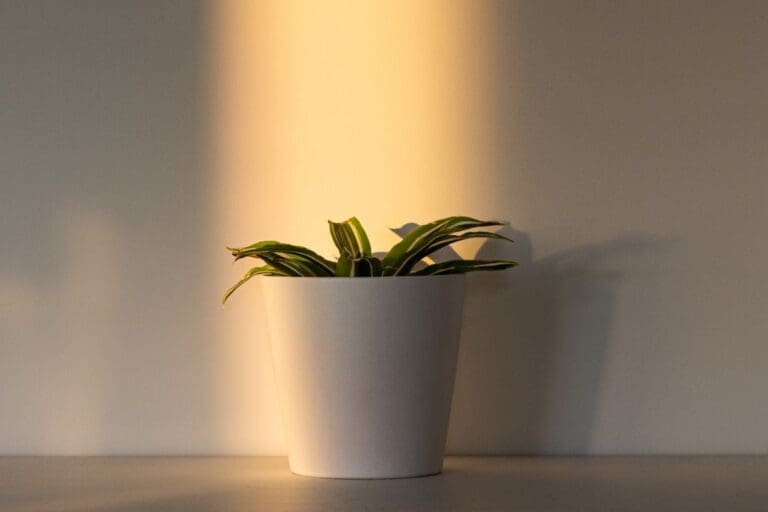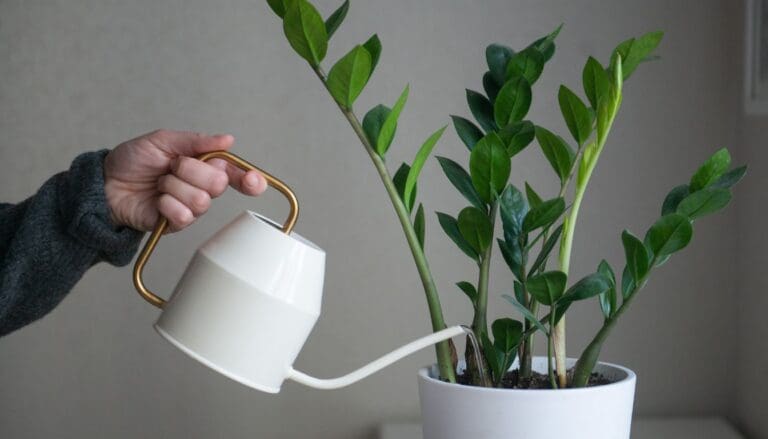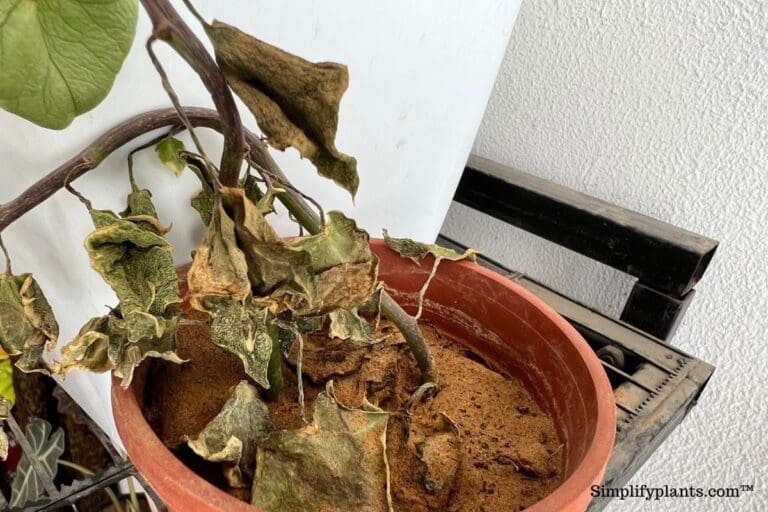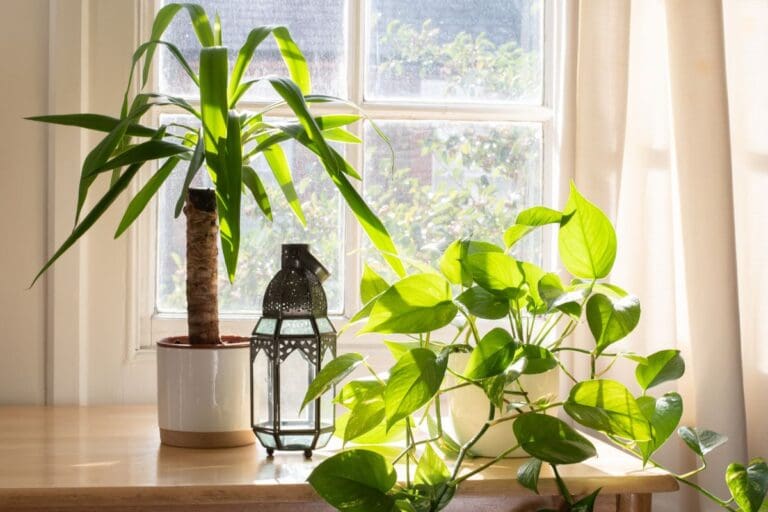3 Mini Greenhouses You Can Build From Recycled Materials
I’m always looking for easy ways to grow more plants without breaking the bank.
Turning random stuff into mini greenhouses is honestly pretty fun—and it actually works!
You can get more veggies and flowers going while cutting down on waste, just by reusing things you’d probably toss out anyway.
Let me show you a few simple projects using bottles, frames, and even old cases to make mini greenhouses.
These ideas don’t need much space, and they give your plants that extra bit of shelter to help them thrive.
Please note: Simplify Plants is reader-supported. As an Amazon Associate, I earn from qualifying purchases made by our readers with no extra cost added to you all! Some links in the post are affiliate links and I get a commission from purchases made through links in the post.
1) Plastic Bottle Greenhouse

I’m a fan of plastic bottles because they’re everywhere and super easy to work with. Plus, it feels good to give them a second life instead of just tossing them.
To make this greenhouse, I chop the bottoms off a bunch of bottles and stack them up. I slide them over thin sticks or poles to keep everything upright.
The clear plastic lets in sunlight but blocks wind and rain, so my plants stay cozy and protected even if the weather’s all over the place.
I usually pack the bottles close together so there aren’t any big gaps. That way, it’s sturdier and keeps the inside climate steady.
Sometimes I just grab one big bottle, cut it in half, and pop it over a tiny seedling. It’s like a little dome—works great for baby plants that need a bit more TLC.
Honestly, you don’t need fancy tools. Just some scissors, maybe tape or string, and you’re set.
The cool part is you can make it as big or as small as you want, depending on how many bottles you can scrounge up. That kind of flexibility is a win in my book.
2) Old Window Frame Mini Greenhouse
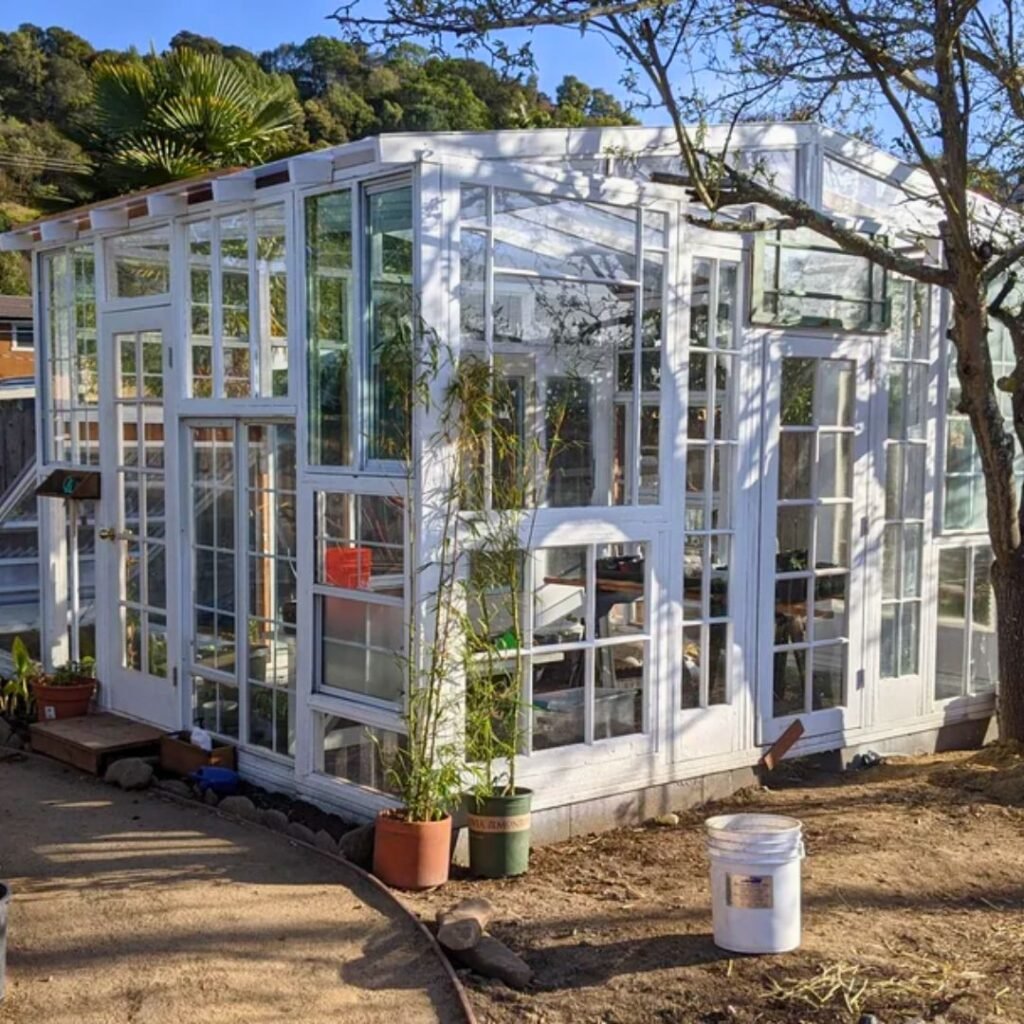
There’s something about using old window frames that just feels right. They already have glass, so why not put them to work in the garden?
I usually start with a basic wooden box as the base, then attach the window frame on top with hinges. It opens and closes easily, so watering and airing things out is a breeze.
The glass panes trap warmth, which really helps seedlings take off in chilly weather. On hot days, I just prop the window open a bit so things don’t get too toasty.
If I want more room, I’ll stack a couple of frames together. It’s a quick way to get a taller greenhouse without buying anything new.
I usually set the mini greenhouse on a flat surface outside or tuck it against a wall. That way, it gets decent sun and doesn’t blow over too easily.
Using old windows saves money and keeps good stuff out of the landfill. Plus, it’s a project that feels creative and just a little bit clever.
3) CD Case Seed Starter

Old CD cases are surprisingly handy for starting seeds. They’re clear, easy to open, and honestly, who’s using CDs anymore?
I give the case a quick clean, then line it with a damp paper towel or a thin layer of soil. The clear cover lets me peek at the seeds sprouting without having to open it all the time.
I spread the seeds out and close the case gently. The tight seal keeps things nice and humid, which is crucial for germination.
I set the CD case by a sunny window so the seedlings get plenty of light. If it’s getting too warm, I just crack it open a bit for air.
When the seedlings are big enough, I move them into little pots or straight into the garden. Using CD cases like this saves money and keeps more plastic out of the trash.
It’s an easy, fun way to recycle—and you get to watch your plants grow right up close.
Benefits of Using Recycled Materials for Mini Greenhouses
Whenever I use recycled materials, I save cash, cut back on waste, and get to be a bit creative. There’s something satisfying about giving old stuff a new purpose.
Old junk gets a second chance, and I end up with a greenhouse that actually feels personal.
Environmental Impact
Every time I reuse materials, that’s one less thing in the landfill. Plastic bottles, old windows, and scrap wood are usually headed for the trash, but I can turn them into something useful.
It also means I’m not adding to the demand for new products. Making new plastic or glass burns up energy and resources. By reusing what’s already around, I help cut down on emissions and waste.
Even little swaps help. For example:
- Plastic jugs can become walls or roof panels
- Wood pallets work great for frames or shelves
- Glass panes make perfect clear covers for sunlight
Each piece I reuse is one step closer to a smaller footprint.
Cost Savings
Buying brand-new supplies can get expensive fast. I’ve noticed how much I save just by using what I already have or can snag for free. Recycled stuff cuts costs without cutting corners.
A lot of the time, I find what I need in my garage, at yard sales, or even on the curb. Old storm windows or leftover lumber work just as well as anything new.
Here’s a quick look at how the savings add up:
| Material | New Cost | Recycled Cost |
|---|---|---|
| Wood pallet | $15–$20 | Free |
| Window glass | $25+ | Free–$5 |
| Plastic bottles | $10+ (per pack) | Free |
The less I spend on materials, the more I have for seeds, soil, and maybe a few new plants.
Creative Upcycling Ideas
Honestly, I get a kick out of turning old stuff into greenhouse parts. Upcycling makes the project more interesting and personal.
I’ll cut plastic bottles in half and stack them into walls. Sometimes I’ll use a broken door frame as an entrance. Even cracked windows can work if you seal up the edges with tape or caulk.
Mixing different materials is fun too. A frame made from pallets with a roof of clear bottles looks quirky but still does the job.
Upcycling definitely gets me thinking outside the box. Instead of tossing things, I see new potential—and that’s half the fun.
Essential Tips for Building Durable Mini Greenhouses
If I want my mini greenhouse to last, I focus on sturdy materials, good insulation, and building safely. The small details in how you put it together really matter.
Choosing the Right Recycled Materials
I always start by scrounging around at home for what I already have. Clear plastic bottles, old windows, and wood pallets are my go-to’s for walls and frames.
I usually avoid flimsy plastics or thin cardboard—they just don’t hold up outside. For wood, I stick to untreated pieces since treated wood might leach chemicals into the soil.
If I’m short on wood, I’ll mix in metal scraps or PVC pipes for extra strength.
Letting in enough light is key. For example:
- Plastic bottles are great for light and airflow
- Glass panes are solid but heavy
- Acrylic sheets are tough and lighter than glass
Mixing these lets me build a greenhouse that’s sturdy—and basically free.
Weatherproofing and Insulation
A mini greenhouse has to stand up to rain, wind, and cold nights. I seal up any gaps with silicone caulk or weatherstripping to keep out drafts.
For the roof, I tilt panels so rain runs off instead of pooling. To keep things warm, I reuse bubble wrap or clear plastic sheets as insulation inside the walls.
On really cold nights, I might throw in a layer of fabric or burlap for extra warmth.
I usually lift the greenhouse off the ground with bricks or wood blocks to stop water from collecting underneath. A few vents or open bottle caps help with airflow so you don’t get mold.
Safe Construction Practices
Whenever I’m cutting glass, metal, or plastic, I wear gloves and safety glasses—it’s just not worth the risk.
Sharp edges are trouble, so I sand or tape over them before building. When stacking bottles or glass panes, I secure everything with screws, nails, or strong zip ties.
Glue alone doesn’t hold up outside, so I don’t rely on it. For heavier frames, I add cross-bracing with wood or metal strips to keep things from collapsing in the wind.
I give the frame a gentle shake before adding panels. If it wobbles, I reinforce the joints until it feels solid. Better safe than sorry, right?
Frequently Asked Questions
I use regular household stuff like bottles, windows, and cases to build mini greenhouses. I also pay attention to airflow, temperature, and plant choices to keep things running smoothly all year.
What are some common household items I can repurpose to create a mini greenhouse?
I usually save plastic bottles, old window frames, and even CD cases. They’re sturdy, easy to find, and perfect for these projects.
How do I ensure proper ventilation in a DIY mini greenhouse?
I leave small openings or drill a couple of holes in the structure. Sometimes I just prop open a window frame or crack a bottle cap to let fresh air in and keep mold away.
Can you suggest easy-to-follow steps for constructing a small greenhouse using recycled materials?
I cut the bottoms off big plastic bottles and set them over seedlings. With window frames, I hinge two together to make a box. For CD cases, I glue them into a cube and use it for starting seeds.
What are the best plants to grow in a homemade mini greenhouse?
I like to grow herbs, lettuce, spinach, and small flowers. They stay compact and do well in a cozy space.
How can I regulate temperature and humidity in my recycled mini greenhouse?
I open vents or lift covers on hot days to let heat out. On cooler nights, I close everything up to trap warmth and moisture.
What are some eco-friendly tips for maintaining a mini greenhouse year-round?
I like to reuse rainwater for watering—honestly, it just feels right and saves a bit on the water bill. Kitchen scraps? Those go straight to the compost pile.
If I spot cracks or loose parts, I’ll patch them up instead of tossing things out. It’s not always pretty, but it keeps the greenhouse going strong.
Recommended Garden Supplies
| Product Image | Our Recommended Gardening Supplies | Check Offers! |
|---|---|---|
Top Top
Top
Top
Top
Top
Top
Top
Top | rePotme Houseplant and Tropical Classic Potting Soil Mix | Check Offer On Amazon |
 Top
Top
Top
Top
Top
Top
Top
Top | Espoma Organic Indoor Plant Food | Check Offer On Amazon |
 Top
Top
Top
Top
Top
Top
Top
Top | GooingTop LED Grow Light 6000K Full Spectrum Clip Plant Growing Lamp | Check Offer On Amazon |
 Top
Top
Top
Top
Top
Top
Top
Top | Soil Moisture Meter | Check Offer On Amazon |
 Top
Top
Top
Top
Top
Top
Top
Top | Govee Hygrometer Thermometer, Bluetooth Enabled! | Check Offer On Amazon |
 Top
Top | LEVOIT Humidifiers for Large Room(Best For Plants) | Check Offer On Amazon |
 Top
Top
Top
Top
Top
Top
Top
Top | Upgraded DIY Automatic Drip Irrigation Kit, 15 Potted Houseplants Support | Check Offer On Amazon |
 Top
Top
Top
Top
Top
Top
Top
Top | Stainless Steel Heavy Duty Gardening Tool Set | Check Offer On Amazon |
 Top
Top
Top
Top
Top
Top
Top
Top | Bonide Insecticidal Soap | Check Offer On Amazon |
 Top
Top
Top
Top
Top
Top
Top
Top | Bonide 32 oz Spray Neem Oil for Organic Gardening | Check Offer On Amazon |
 Top
Top
Top
Top
Top
Top
Top
Top | Garden Safe Fungicide | Check Offer On Amazon |

